
Let’s take a look at cultivating elasticity in relationship to the incoming pitch.
Eliminating muscle slack and creating elasticity via co-contractions happens during pelvis loading.
Hitters know inherently that they need to create elasticity in order to create power and be a good hitter. The amount of energy produced during the load will directly affect the rate and speed at which the hitter can release the barrel into contact a.k.a. “delivering the elasticity”.
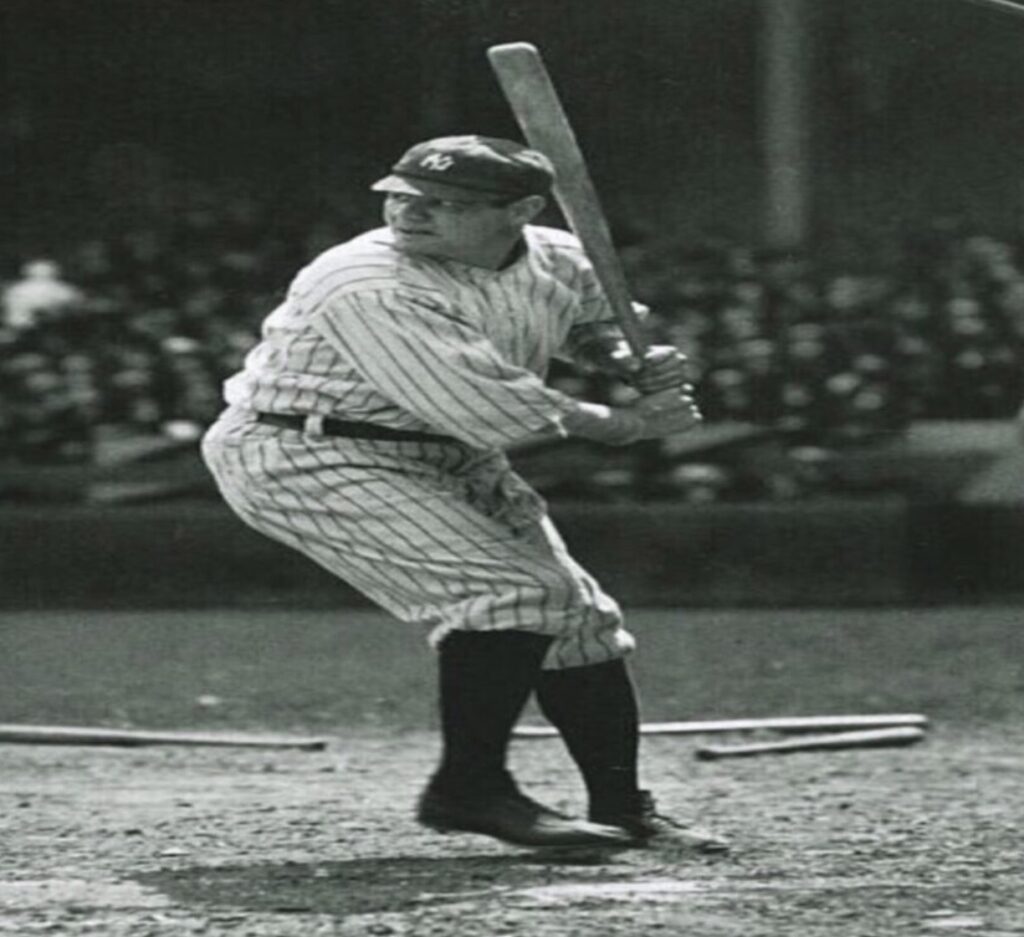
Instead of talking about a differential between the hips and shoulders moving in opposite, transverse directions —as explained last week, I am suggesting movements of an integrated pelvis and spine; and my interpretation of this for hitting purposes is the use of the lumbo-pelvic-spine complex and the posterior and anterior oblique muscle slings that work contralaterally and from PROXIMAL TO DISTAL to accomplish the cultivation of the elasticity needed to execute the launch of a baseball swing in .14/seconds.


HINGING THE PELVIS
At the pitcher’s 12 o’clock position in softball or as the pitcher breaks his hands in baseball, the hitter starts his/her hinge.
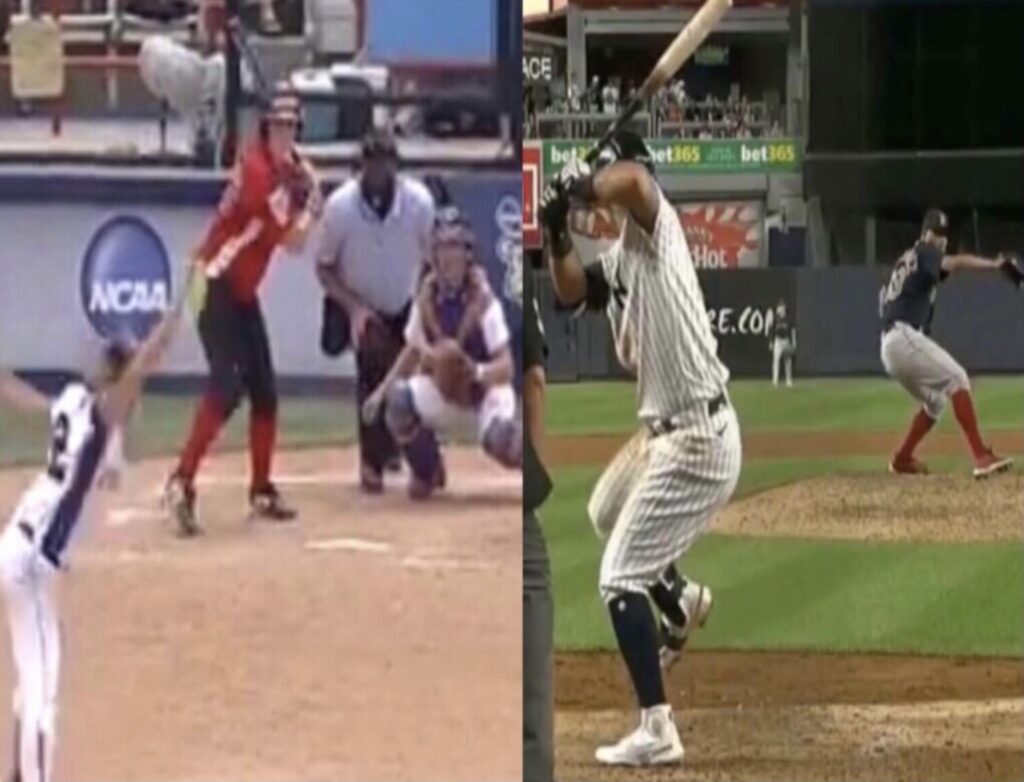
On the left, from the CF view at the pitcher’s 12 o’clock position, Holly has started to create the integration and relationship between her pelvis and spine as soon as she starts to hinge. Her pelvis and spine are moving in the sagittal plane initially in order to integrate her pelvis and spine via hinging. Some coaches and commentators refer to this as POSTURE.
Same thing is happening with the MLB hitter (on the right).
Both hitters start the process of cultivating elasticity early, and the best will continue to maintain it and increase it AS LONG AS NECESSARY AND AS LATE AS POSSIBLE. The best way to remove muscle slack is through synergistic isometric co-contractions. Different parts of the body working together while held at constant length and optimal tension is what the hitter wants to happen in the pelvis loading.

I believe that the lumbo-pelvic-spine complex (an integrated spine and pelvis) is the SOURCE of the movements made by all great hitters. I believe that the transmission of force through the lumbo-pelvic-spine is the MOST IMPORTANT PART OF QUALITY ROTATIONAL POWER DEVELOPMENT.
HOW TO MOVE THE MIDDLE

IN THE PHOTO ABOVE: After release of the ball by the pitcher, for the next 100 milliseconds, Josh Donaldson is trying to recognize the pitch location and speed while continuing to coil as he MAINTAINS & INCREASES ELASTICITY.
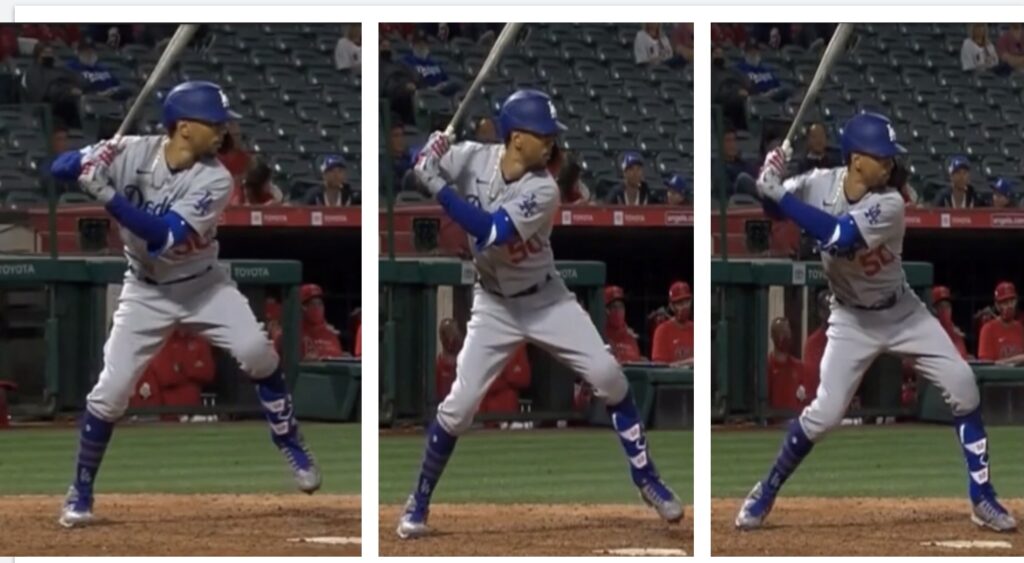
Let’s take a look at the open view of Mookie Betts. The open view shows the sequence of how Mookie hinges his pelvis first (photo on the left) then coils as he moves his middle (photo in the middle) and finishes at toe touch by starting to deliver the elasticity he has created via rotation (photo on the right).
Let’s use the Coach in the red jacket with his his hands folded/crossed directly behind Mookie and viewed between his legs to gauge how he “moves his middle”; and let’s use the bald headed fan in the stands viewed on the side of Mookie’s helmet to reference the stability of his “posture” (head and spine).
In the first photo of Mookie on the left, he is hinging his pelvis and the Coach’s crossed hands in the red jacket are about perfectly centered behind him. Notice Mookie doesn’t need an exaggerated leg lift to hinge his pelvis. He is not swaying backwards. He is not trying to get into a one-legged Karate-kid, balance point pose. He has integrated his pelvis with his spine – “posture” – mostly in the sagittal plane; and the bald head of the fan in the stands is not yet visible.
In the middle photo, Mookie has increased the tension while his pelvis starts to “coil” and his middle is moving, as we can no longer see the Coach’s crossed hands but now only his left elbow. His head and spine have stayed stable but the bald head in the stands to the left of his helmet has become barely visible.
Then in the last photo on the right, he is at toe touch and he has started to rotate. You no longer can see the Coach’s hands or arms behind him and the now the bald head and face of the man in the stands are visible; IOW, not tons of lateral bend or shoulder tilt or his head dumping backwards.
Mookie is a great hitter, using his lumbopelvic-spine complex to create elasticity. ABOVE, we just did a simple analysis with three still frames and some apparent landmarks to piece together his functional movements so you as coaches or hitters can COMPARE your “frames” and movements to his.
FYI, I recently got to spend some time talking hitting and “diving deep” with Tim Heyers, hitting coach for the Boston Red Sox when Mookie got to the organization. Coach Heyers won a World Championship with the Red Sox and just accepted a position as the hitting coach with the Texas Rangers. We talked about some of these concepts (pelvis loading, stability, loading toward the center of the body, etc.). Tim has a brilliant mind. After visiting with him, there is no doubt in my mind that he influenced Mookie’s hitting movement patterns, as well as many more hitters and vice-versa, that Mookie influenced Coach’s ideas. Mookie has long been a SWING MODEL for me to teach “little guy power” to my players and how proximal to distal is the best way.
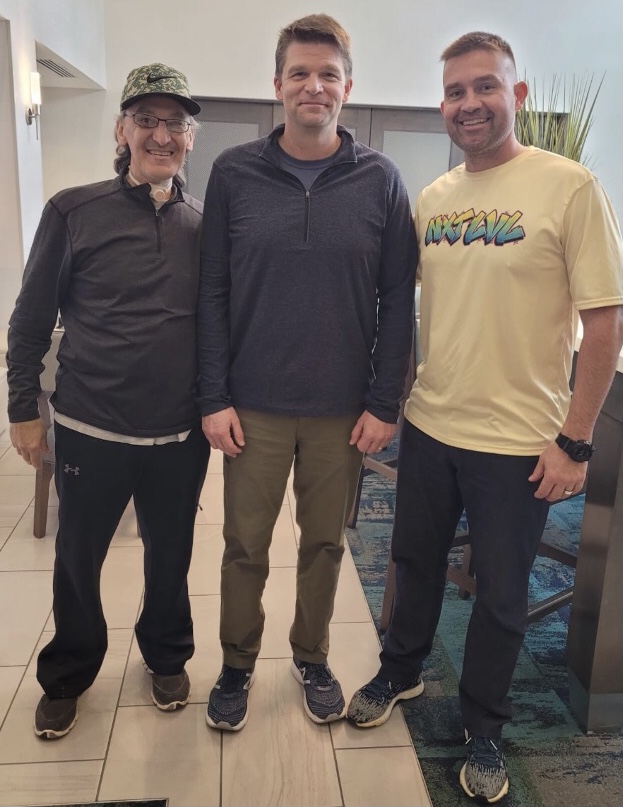
TWO BIG FLAWS
When watching front toss with less experienced hitters, most times right after the ball is released from the tosser, the hitter will fall into one of two groups:
Group #1: STEP THEN SWING. The hitter gets their foot down early and usually steps “open” and “into the bucket” (see PHOTO BELOW on the right). There is little to no contribution from the coiling of the pelvis. I’ve heard many hitting coaches refer to this flaw as “not staying into their hips” or “getting out of their hips too early”.
Group #2: Creating a BALANCE POINT ON THE REAR LEG. Holding the hips static and paused at peak leg lift as seen in the PHOTO BELOW on the left. There is no shift forward of the hitter’s center of mass resulting in an uphill/tilted/leaning backwards position.
Both groups “wrongly” focus on what to do with their legs instead of focusing on their PELVIS. By wrongly focusing on their legs, they get NO INTEGRATION WITH THEIR SPINE which is why they show BAD POSTURE and are so inconsistent with their timing. PROXIMAL TO DISTAL is the way of the best hitters in the game. The pelvis, and only via the pelvis, is PROXIMAL TO DISTAL control created.
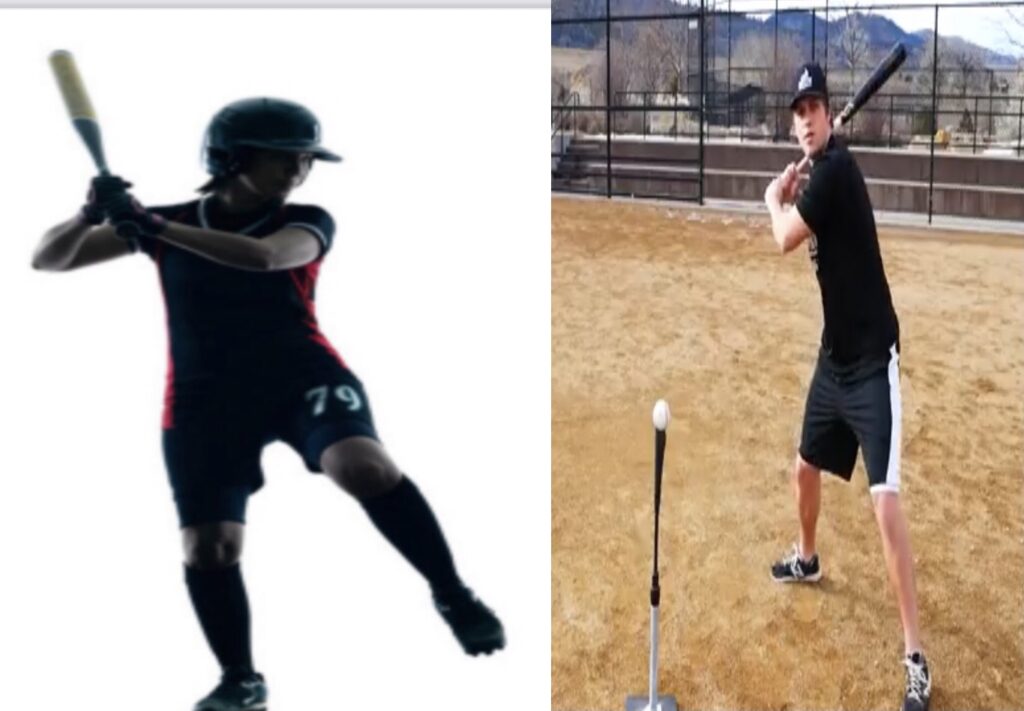
CREATING ELASTICITY AS LONG AS NECESSARY

(PHOTO ABOVE) Ball is over HALFWAY: At the over halfway point of the pitch, Holly has maintained and increased her coil and stretch even as she shifts her center of mass linearly, something we refer to at Swing Attractors as MOVING THE MIDDLE (a.k.a. forward while stretching).
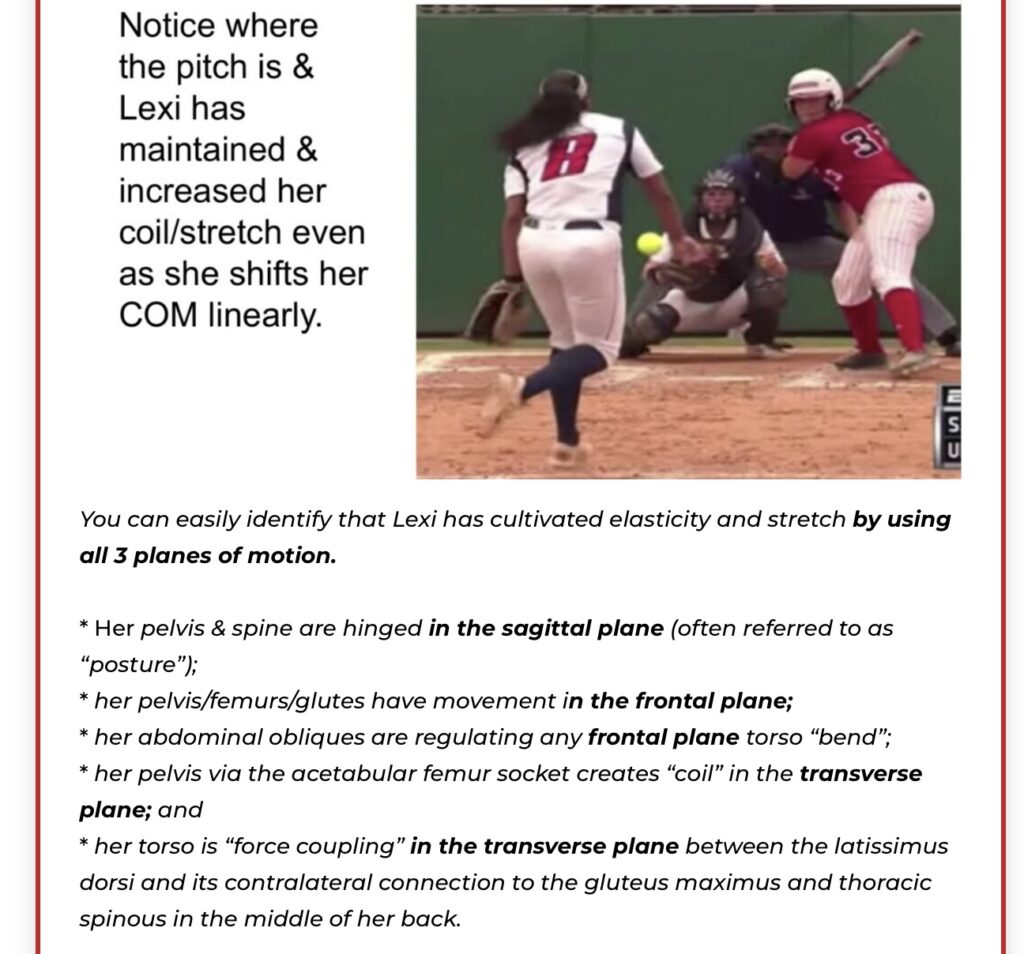

AND AS LATE AS POSSIBLE
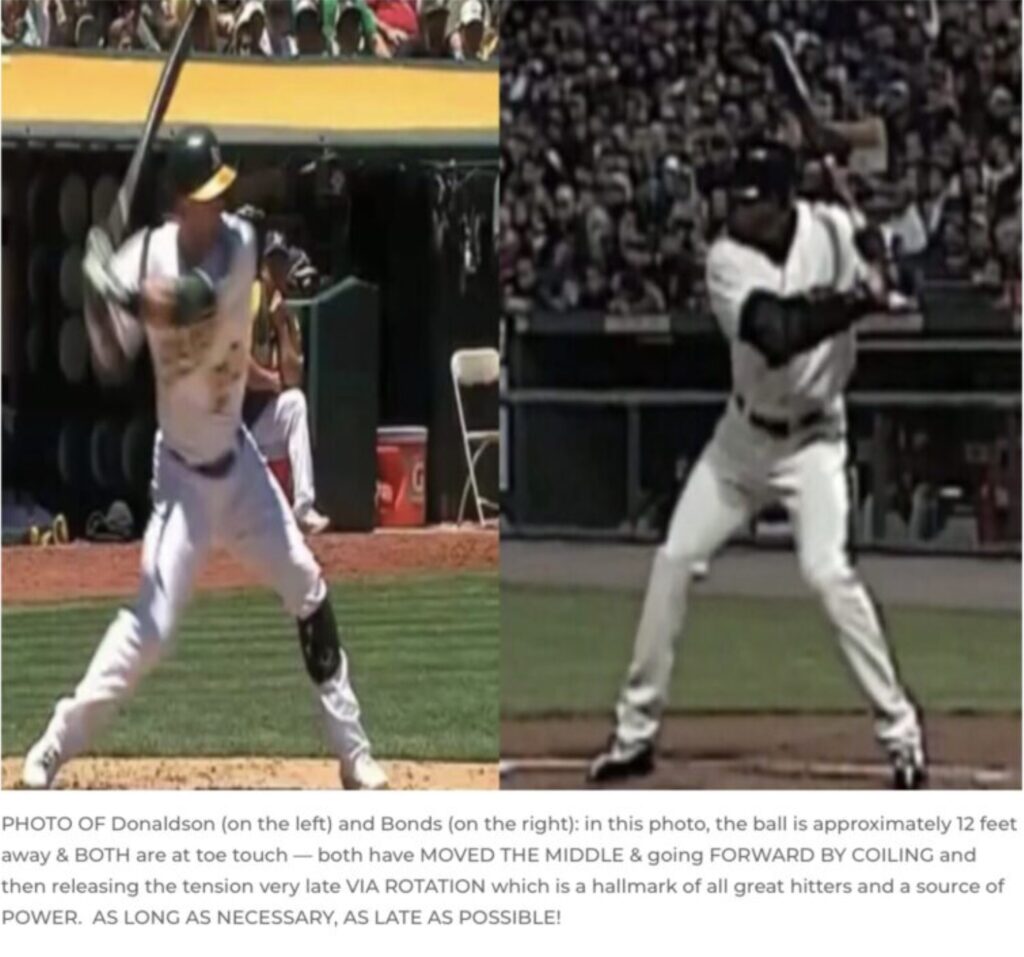
The hitter does not have to learn the anatomy of the body to make these movements.
As a coach:
- Just put them in the right learning environment;
- with the right drills and gadgets and protocols;
- with some instruction, oversight, and supervision;
- give some objective data/measurements and feedback;
- show them some slow motion video review and analysis;
- make sure the MOVEMENTS are “checking the boxes of the swing attractors”, then
- trust the hitter’s body to self-organize to figure out the rest.
I’m hopeful that by presenting this information, you will be able to create the right movement parameters with 2 or 3 simple constraints, and come up with 2 or 3 drills &/or gadgets and then your hitters will achieve some “magical moments”.
PURSUE EXCELLENCE & WIN THIS PITCH!
About the Author
Mike Lotief coached 17 successful years as either the head softball coach or co-head softball coach with his wife Stefni Whitton Lotief at the University of Louisiana from 2002-2017 with an overall coaching record of 731-176 (80.6 winning percentage). Every season, the Ragin Cajuns softball team advanced to the NCAA tournament and also advanced to three (3) Women’s College World Series (2003, 2008, 2014) and from 2012-2016 advanced to five (5) straight NCAA Super Regionals. Coach Lotief produced over 40 All American selections and his 2017 team lead the nation in scoring and was ranked in the Top 10 in home runs, slugging percentage, on base percentage.
The coach is a cancer survivor (twice) and was the first person in the U.S. to receive the Pro Trach device. Mike and Stefni spearheaded and raised the funding to build the new softball stadium in 2009 and the new softball indoor hitting facility in 2015. They are proud parents to Chelsea, who played softball and graduated from the Univ. of Louisiana in 2018, and Andrew, who is a junior at Louisiana studying Mechanical Engineering.
Previous Articles in this Series
- The Mental Swing Attractors: Failure Cannot Break You (Nov. 11, 2021)
- Training Insights: “Swing Attractors” by Coach Mike Lotief… the Flaws of Pelvic Loading (Nov. 9, 2021)
- The Mental Swing Attractors: Push Yourself… You Don’t Have to Be #1 to BE #1! (Nov. 4, 2021)
- Training Insights: “Swing Attractors” by Coach Mike Lotief… Pelvis Loading, Part 2—The Planes of Movement (Nov. 2, 2021)
- The Mental Swing Attractors: Remove the Rope from Your Ankle & Get Rid of the Limiting Beliefs! (Oct. 28, 2021)
- Training Insights: “Swing Attractors” by Coach Mike Lotief… Pelvis Loading, Part 1—It’s All in the Hips (or Somewhere Deep Below) Oct. 26, 2021
- The Mental Swing Attractors: Champions are Developed by Devotion & Discipline! (Oct. 21, 2021)
- Training Expertise: “Swing Attractors”… the Secrets of Power Hitting by Coach Mike Lotief (Oct. 19, 2021)
More About Mike Lotief
- Why Michael Lotief is a Legendary Coach? by Jay Patel
- The Secret To Michael Lotief’s Success. By Jay Patel
- Michael Lotief Fights for Rajin’ Cajuns by Graham Hays ESPN
- Michael Lotief: Taking His Sport to New Heights by Neha Kapoor
- For the Love of the Game: A Look at Ragin’ Cajun Softball’s Power Couple
- How Louisiana-Lafayette’s Michael Lotief Develops Hitting Gems by Graham Hays ESPN

